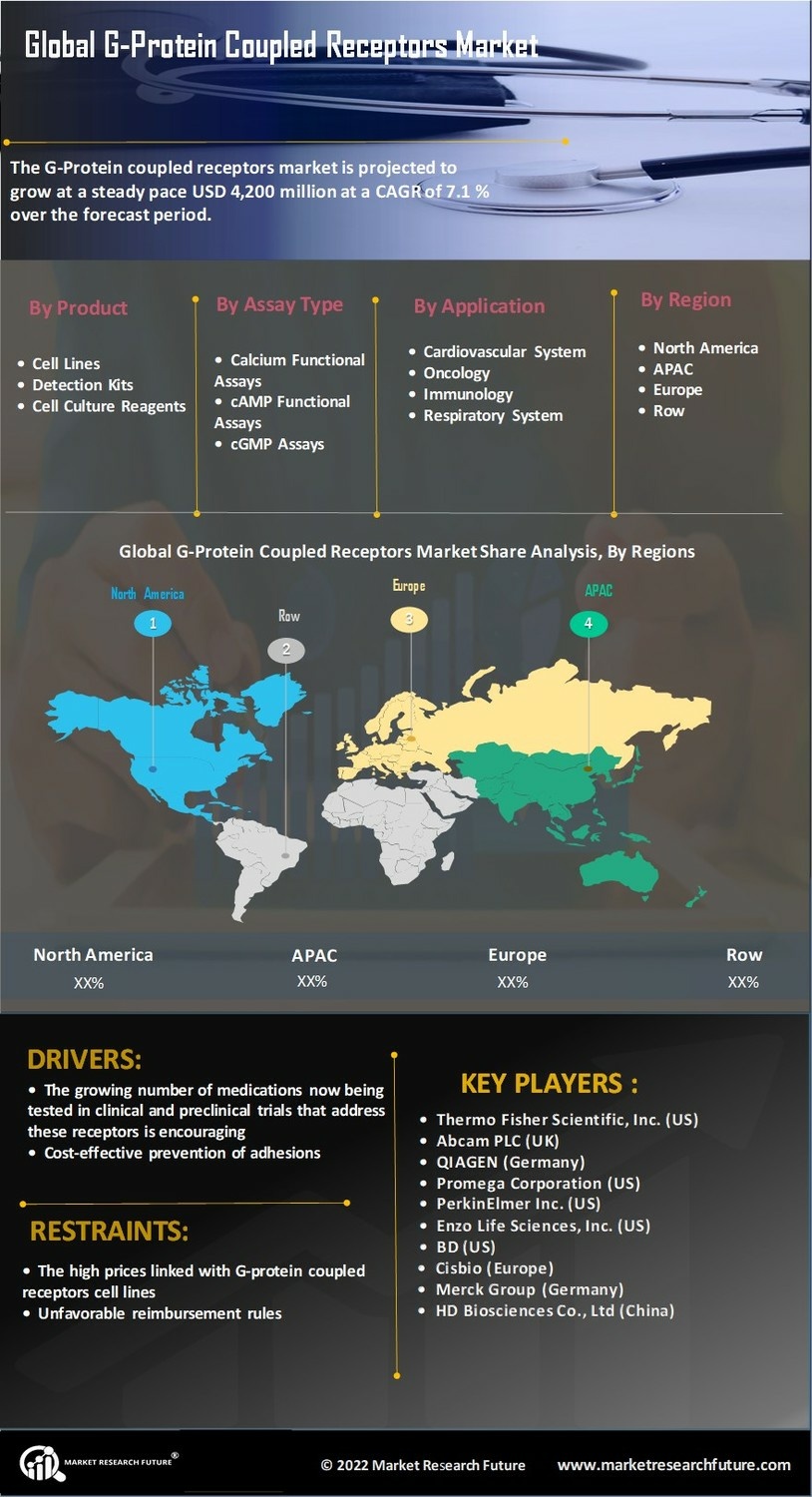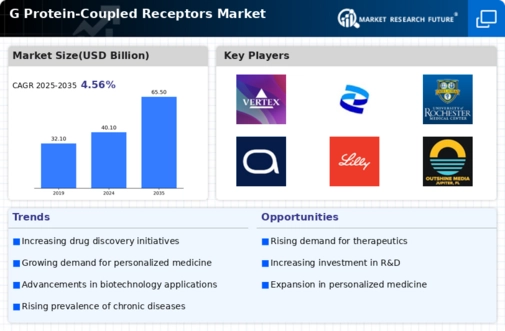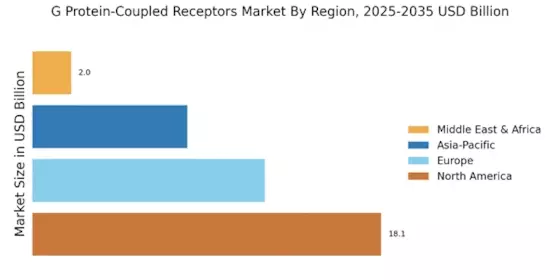Advancements in Biotechnology
Technological innovations in biotechnology are significantly influencing the G Protein-Coupled Receptors Market. The advent of high-throughput screening and advanced molecular modeling techniques has streamlined the drug discovery process, allowing for the rapid identification of GPCR-targeting compounds. This has led to a surge in the number of clinical trials focused on GPCRs, with a notable increase in successful drug candidates entering the market. Data indicates that the biotechnology sector is projected to grow at a compound annual growth rate of over 7% in the coming years, further bolstering the G Protein-Coupled Receptors Market. As these technologies continue to evolve, they are likely to enhance the efficiency and effectiveness of GPCR-targeted therapies.
Rising Prevalence of Chronic Diseases
The increasing incidence of chronic diseases such as diabetes, cardiovascular disorders, and cancer is driving the G Protein-Coupled Receptors Market. These conditions often require targeted therapies that leverage the unique mechanisms of GPCRs. According to recent data, chronic diseases account for a substantial portion of healthcare expenditures, prompting pharmaceutical companies to invest in GPCR-targeted drug development. This trend is likely to continue, as the demand for effective treatments grows. The G Protein-Coupled Receptors Market is thus positioned to expand, as more therapies are developed to address these pressing health issues. Furthermore, the aging population is expected to exacerbate this trend, leading to a higher demand for innovative GPCR-based therapies.
Growing Demand for Personalized Medicine
The shift towards personalized medicine is a key driver of the G Protein-Coupled Receptors Market. As healthcare moves away from one-size-fits-all approaches, there is an increasing emphasis on tailoring treatments to individual patient profiles. GPCRs play a crucial role in this paradigm shift, as they are involved in numerous signaling pathways that can be targeted based on genetic and phenotypic variations. The market for personalized medicine is projected to reach over $2 trillion by 2030, indicating a robust growth trajectory. This trend is likely to enhance the relevance of GPCRs in drug development, as more therapies are designed to cater to specific patient needs within the G Protein-Coupled Receptors Market.
Increased Investment in Pharmaceutical R&D
The G Protein-Coupled Receptors Market is experiencing a boost due to heightened investment in pharmaceutical research and development. Companies are recognizing the therapeutic potential of GPCRs, leading to increased funding for research initiatives aimed at discovering new GPCR-targeting drugs. Recent statistics reveal that global pharmaceutical R&D spending has surpassed $200 billion annually, with a significant portion allocated to GPCR-related projects. This influx of capital is expected to accelerate the pace of innovation within the G Protein-Coupled Receptors Market, resulting in a broader array of treatment options for various diseases. As the pharmaceutical landscape evolves, the focus on GPCRs is likely to remain a priority for many organizations.
Regulatory Support for Innovative Therapies
Regulatory bodies are increasingly supporting the development of innovative therapies, which is positively impacting the G Protein-Coupled Receptors Market. Initiatives aimed at expediting the approval process for breakthrough therapies are encouraging pharmaceutical companies to invest in GPCR-targeted drug development. Recent regulatory changes have introduced pathways that facilitate faster access to market for novel GPCR-based treatments, thereby stimulating research and development efforts. This supportive regulatory environment is expected to foster innovation within the G Protein-Coupled Receptors Market, as companies are more inclined to pursue ambitious projects that target GPCRs. As a result, the market is likely to witness a surge in new therapeutic options in the near future.


















Leave a Comment